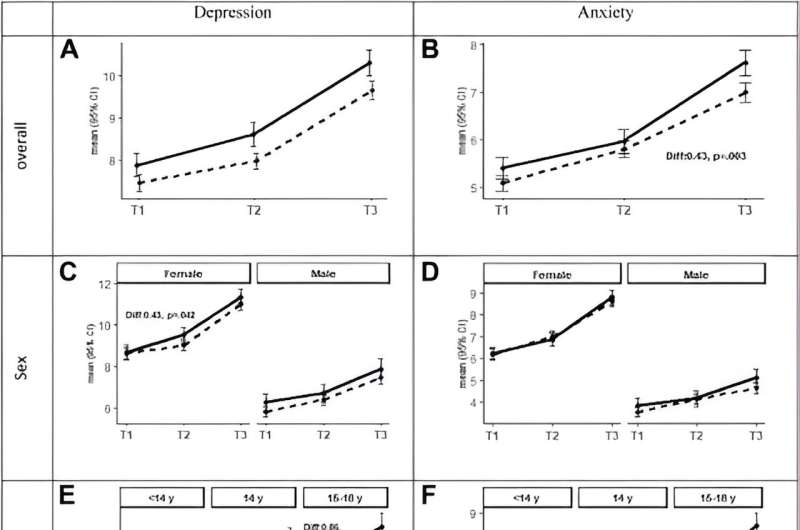This article has been reviewed according to Science X's editorial process and policies. Editors have highlighted the following attributes while ensuring the content's credibility:
fact-checked
peer-reviewed publication
trusted source
proofread
Q&A: Examining high school student mental health post-pandemic

Mental health issues had been a concern before the pandemic, but they came into focus even more during this time. In a recent study published in the Journal of Adolescent Health, Dr. Mahmood Gohari from the University of Waterloo's School of Public Health Sciences used survey data from almost 5,400 Canadian adolescents to examine changes in depression and anxiety from 2018 until 2021. For World Mental Health Month, he discusses his findings:
How did high school youth mental health fare during the pandemic?
We observed a persistent rise in depression and anxiety symptoms among high school youth throughout the pandemic. Notably, the symptoms showed a steeper increase one year after the pandemic's onset compared to the initial month. Factors such as prolonged isolation, frequent disruptions in school routines and the implementation of new protocols upon returning to school within a year post-pandemic likely contributed to this heightened rise in symptoms—surpassing the levels seen during the early stages of the pandemic.
Did you find that some students were affected more than others?
We observed varying impacts on students based on gender and age. A notable difference was observed in depression symptoms among females and older adolescents. Specifically, females showed a more significant increase in depression symptoms compared to males. Moreover, older adolescents experienced a notable surge in depression symptoms in contrast to their younger counterparts.
Can these changes be attributed to the pandemic, or to something else?
Our analysis employed a robust design that differentiated the effects attributable to the pandemic from other potential influences, like age. Despite observing a notable surge in depression and anxiety within our extensive high school student dataset, especially during the second year of the pandemic, our findings suggest that this increase during the pandemic didn't significantly deviate from the natural upward trajectory of these internalizing symptoms typical during adolescence. It aligns more with the gradual progression of internalizing symptoms experienced by adolescents as they transition from early to later stages of adolescence.
More information: Mahmood R. Gohari et al, Adolescents' Depression and Anxiety Symptoms During the COVID-19 Pandemic: Longitudinal Evidence From COMPASS, Journal of Adolescent Health (2023). DOI: 10.1016/j.jadohealth.2023.07.024


















